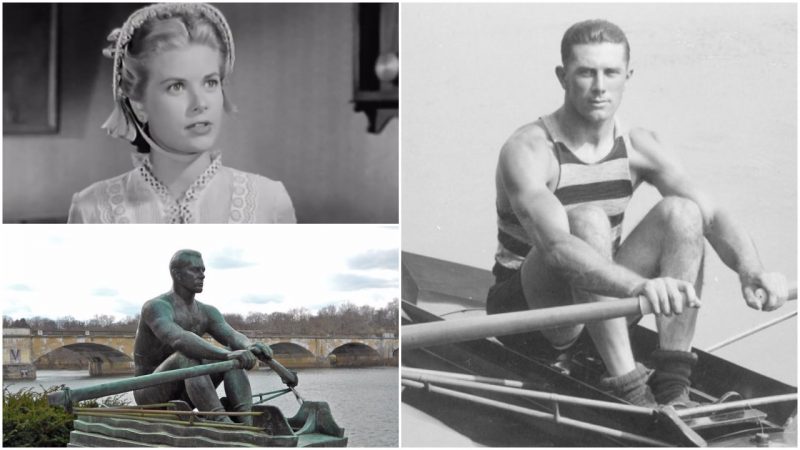John Brendan Kelly Sr. or better known as Jack Kelly, was the father of the actress and Princess of Monaco, Grace Kelly, and John B. Kelly Jr., as well as an accomplished rower.
He became very famous as one of the most accomplished American rowers in the history of the sport of rowing. He won the Olympic Gold Medal three times and was the first one in the sport of rowing to do so. In the single scull, Kelly has won 126 straight races. Besides, Jack Kelly was as well a multimillionaire in the construction industry based in Philadelphia. Later, he became the grandfather of Albert II, Prince of Monaco.
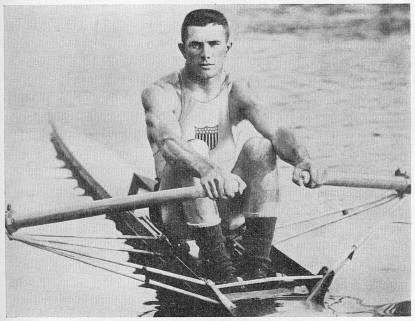
Kelly was born in 1889, in Philadelphia as one of ten children of Irish immigrants. In 1908, he started working with bricklaying, and around the same time, Kelly learned to row on the Schuylkill River. Eight years later, Kelly was already a national champion, and by the time he joined the U.S. Army as a private in WWI, he was the best sculler in the United States. While in the army, Kelly joined the boxing tournament of the armed forces as a heavyweight. He also rose to the rank of a lieutenant, but during a boxing match he broke his ankle and was discharged from the army in 1918. That tournament was won by Gene Tunney, the future World Professional Boxing Champion. Later, Kelly was joking with Tunney asking him “Aren’t you lucky I broke my ankle?”
After his discharge, Kelly got back to rowing, and he started a brickwork contracting company. He was a self-promoter and was on his way to becoming a millionaire. He coined the slogan”Kelly for Brickwork,” which often became present at construction sites. He also developed a unique technique to ensure that real estate developers would pay their debts for his brickwork. His crews were mortaring a single pane of glass into every chimney they built. So, when the new owners would move into the apartments and figure out that the smoke from their fireplaces is backing into their homes, they would complain to the realtors. Then, the complaints would reach Kelly whose answer was “I’ll take care of it when your check clears.” Once paid, his crews would just drop one brick down and smash the glass thus solving the problem.
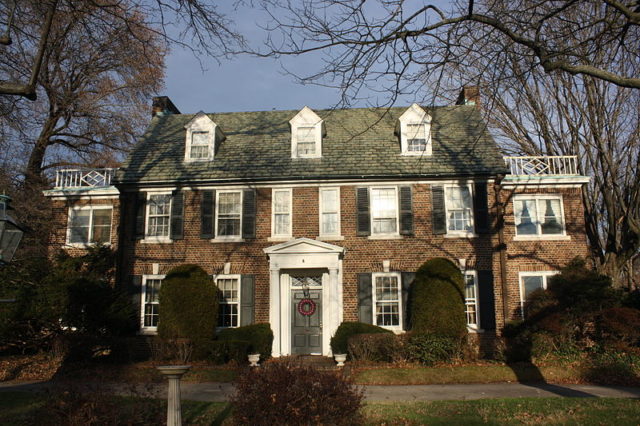
Passionate about sports, Kelly played professional football in 1919, for the Holmesburg Athletic Club. That same year he scored three touchdowns only in the first quarter of the game against Camden, New Jersey. The team won the 1919 and 1920 Philadelphia City Championship. By 1920, Kelly was one of the most popular sportsmen in rowing. He had already won six U.S. National Championships. In 1920, he applied to race in the Diamond Sculls at the Henley Royal Regatta, held each year on the River Thames in Henley, England. It was the most prestigious rowing event at the time, and as a man who had done manual labor as a bricklayer was “naturally” rejected.
Kelly’s rejection became widely publicized. This event led him to participate in the Summer Olympics of 1920 which he initially planned to skip so that he could race at Henley. After his rejection, Kelly had angered and announced to the media: “I had made all the arrangements to sail for England … I’ll go to the Olympics now for sure. I want to get a crack at the man who wins the diamond sculls.” And indeed, he represented the U.S. in Antwerp, Belgium at the 1920 Summer Olympics. And indeed, even though it was one of the closest and most dramatic rowing duels in the Olympic history, Kelly defeated the winner of the Diamond Sculls, the British sculler Jack Beresford. However, the two became good friends.
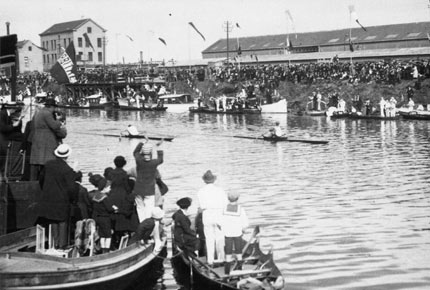
Just thirty minutes after the singles final, Kelly teamed with Paul Costello and won the double skull. This feat has never been repeated at the Olympic games. After his victory and the glory at the Olympics, Kelly sent his racing cap via mail to King George V with a short note: “Greetings from a bricklayer.” Maybe one of the sweetest acts of revenge in history.
Нot only that he came back with such a success from the Olympics, but the affair about his rejection at Henley was so popularized and widely reported in Philadelphia, New York, and Philadelphia, that it even helped Kelly’s bricklaying business. Americans stood on his side, supporting him and favoriting him, many claiming that he was rejected because the English couldn’t stand an American winning the Diamonds.
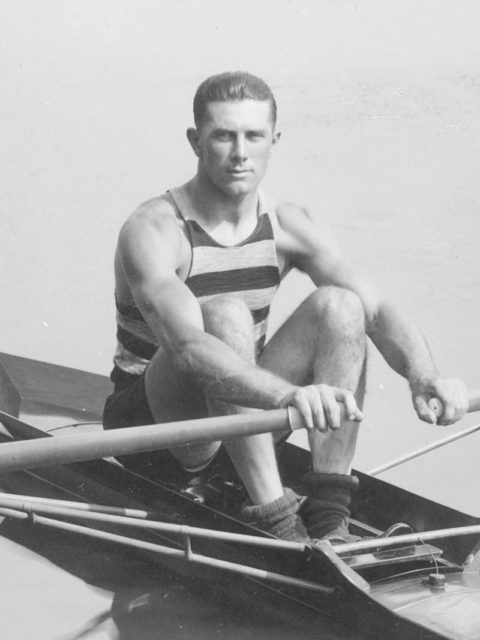
In 1924, Kelly repeated his success along with his cousin Costello. They won the double-skull at the 1924 Summer Olympics in Paris. This victory made Kelly the first rower who won three gold medals at the Olympics. He was one of the most accomplished and famous athletes of his time.He didn’t race at Henley, but his son, John B. Kelly Jr., won the Diamond Sculls in 1947 and 1949.
In his private life, Kelly was a family man, married to his long-time girlfriend Margaret Katherine Majer, an instructor and a coach of women’s teams in the University of Pennsylvania Physical Education Department. Together, they had four children among who Grace Patricia, the Academy-Award winning actress and the Princess of Monaco. When Grace married Prince Rainer in 1956, her father provided a two-million dollar dowry. When they got engaged, Kelly told Rainer that royalty doesn’t mean that much to him and his family and that he hoped that Rainer wouldn’t run around the way some princes do.”
Besides winning the Diamond Sculls twice, his son, John B. Kelly Jr., was also awarded the James E. Sullivan Award in 1947, as the best amateur athlete in the US. He represented the United States at the Olympics in 1948, 1952, 1956, and 1960. Even though he didn’t repeat his father’s success, Kelly Jr. was also passionate about rowing and continued to be involved in sports, eventually getting appointed as President of the United States Olympic Committee.
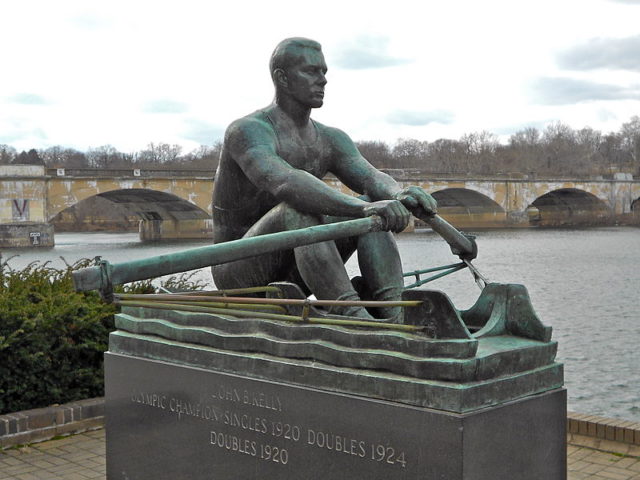
John Kelly was also involved in politics. He held the chairmanship of the Philadelphia County Democratic Party in 1937, and in 1935, he ran for Mayor of Philadelphia. Although it was a heavily Republican city, Kelly came close to winning.
Kelly died in 1920, at the age of 70. He was buried at Holy Sepulchre Cemetary in Philadelphia.He was the president of the Fairmount Park Commission and later became the director of the National Physical Fitness, appointed by President Roosevelt. He was also Commodore of the Schuylkill Navy, a president of the NAAO, and he was also the only rower who was a member of the U.S. Olympic Hall of Fame.
